Do not interrupt social welfare payments for social protection beneficiaries
The Ministry of Health has just sent a document to the Chairmen of the People's Committees of provinces and centrally-run cities requesting urgent implementation of measures to ensure that the payment of monthly social allowances to social protection beneficiaries in July, August and September 2025 is carried out in accordance with regulations, continuously and without interruption.
Illustration photo. |
The document was signed and issued by Deputy Minister of Health Le Duc Luan, aiming to concretize the implementation of major policies of the Government related to administrative organization arrangement and building a two-level local government model.
According to the guidance of the Ministry of Health, the Department of Health of provinces and cities is assigned to preside over and coordinate with relevant agencies to organize the implementation of updating and operating the Information System and database on social protection beneficiaries in accordance with the two-level local government model.
Localities need to guide the People's Committees at the commune level to update data, establish and approve the list of beneficiaries of monthly social allowances on the System from July 2025.
At the same time, before June 30, 2025, training must be organized for commune-level officials to proficiently use the System. The smooth operation of the System will contribute to ensuring accurate, timely, and correct subsidy payments and promoting cashless payments.
Along with that, the Ministry of Health requested the Chairmen of the People's Committees of provinces and cities to direct the People's Committees at district and commune levels to coordinate well in handing over and receiving records, documents and responsibility for paying monthly social allowances.
District-level People's Committees need to complete the payment of social allowances for June 2025 to social protection beneficiaries before June 28, and at the same time organize the handover of records, data and lists of beneficiaries to the commune level in accordance with the provisions of the Law on Archives and current guiding documents, to be completed before June 30, 2025.
From July 2025, the People's Committee at the commune level will be the direct unit to organize monthly social allowance payments to the people. Therefore, localities need to proactively arrange adequate human resources, funding and technical infrastructure to carry out this task.
At the same time, we must be ready to handle any arising situations, ensuring that there are no delays or interruptions in the payment process. The organization of social allowance payments must be carried out in accordance with the correct procedures, to the right subjects, fully and promptly, contributing to ensuring social security in the current important administrative transition period.
Escape from "lying prone to live" thanks to high-tech spinal surgery
Mr. L., 61 years old, residing in Hai Phong City, has suffered from a herniated disc for many years. Although he has been treated with both Eastern and Western medicine, the disease has become increasingly severe, making him unable to walk, and can only lie on his stomach in the "frog" position to relieve the pain.
Last week, he suddenly had severe pain in his lower back, radiating down his legs. Painkillers were no longer effective, and he could not stand or sit normally. MRI and X-ray results at Tam Anh General Hospital in Ho Chi Minh City showed that he had a serious disc herniation at L3-L4 and L4-L5, with a large herniated mass compressing the nerve roots, causing inflammation, swelling, and movement disorders.
“When a disc herniates, it will press on the nerves, causing numbness and weakness, reducing mobility. If not treated promptly, it can lead to paralysis of the legs, loss of bowel and bladder control, and many other dangerous complications,” said Dr. Nguyen Van Toai, Spine Department.
Faced with the risk of irreversible nerve damage, doctors prescribed Mr. Loi spinal decompression surgery and artificial disc replacement. This is a minimally invasive surgical method that completely removes the damaged disc and replaces it with an artificial disc, while screwing two vertebrae together to stabilize the spinal structure and release the compressed nerve roots.
The surgery took place within 4 hours, with the support of modern surgical equipment such as the MISONIX ultrasonic cutting drill system that allows cutting bones with high-frequency ultrasonic waves without causing bleeding, without damaging soft tissue, and the Aesculap high-speed grinding drill that helps quickly remove bone spurs that compress nerves while still protecting the surrounding nerve tissue. As a result, the doctors installed 6 fixing screws and successfully replaced two artificial discs for the patient.
On the first day after surgery, Mr. Loi said he felt almost no pain and could stand up and walk around easily. Three days later, he was discharged from the hospital with good leg mobility and could lie flat, something he had not been able to do for many months. It is expected that after 4 to 6 months, when the vertebrae have completely healed, he will be able to recover almost full function and return to normal activities.
According to Dr. Toai, spinal diseases such as disc herniation are common consequences of degeneration or trauma. If detected early, they can be treated with medication and physical therapy.
However, when the disease has progressed severely and conservative treatment is ineffective, continuing to use drugs for a long time not only does not help improve but also harms the liver, kidneys, and stomach. In these cases, surgery, especially minimally invasive surgical techniques combined with modern equipment, is the optimal solution to help patients escape pain and recover quickly.
Emergency surgery at night successfully performed on twins infected with Covid-19
Doctors at the Hanoi Obstetrics and Gynecology Hospital have just successfully performed a night-time cesarean section for a pregnant woman with twins at 33 weeks, who was infected with Covid-19 and at risk of serious complications. The two baby boys were born safely, bringing great emotion to the entire medical team and family.
Pregnant woman T.Th.T (36 years old, residing in Hai Phong), carrying twins using IUI assisted reproductive technology, was transferred from Hai Phong Obstetrics Hospital to the Central Obstetrics Hospital in a state of threatened premature birth, with continuous uterine contractions and tested positive for Covid-19.
Immediately upon admission, the pregnant woman was admitted to the Department of Obstetrics and Gynecology and was given the most aggressive treatment regimen by doctors, using lung maturation drugs and pregnancy maintenance drugs to maximize the duration of pregnancy, creating the best conditions for the development of the fetus in the womb.
However, a few days later, the mother’s condition suddenly worsened, with frequent, uncontrollable uterine contractions. After a quick consultation, the doctors decided to perform an emergency cesarean section to protect the safety of both mother and fetus.
Specialist II Doctor Nguyen Duy Hung, Deputy Head of the Department of Obstetrics and Gynecology Infection, who directly commanded the surgery, said: “That moment was decisive. If delayed, it could seriously affect the lives of both mother and child.”
The surgery took place under extremely special conditions: the mother was carrying premature twins, had a history of previous surgeries, and had Covid-19, factors that increased the risk of infection and complications. More worryingly, the patient also had low platelets, which could easily lead to the risk of bleeding during and after surgery.
“We have to calculate and consider each operation carefully. This is an obstetric surgery, related to infection and neonatal factors. In addition to the surgical team and anesthesiologist, there is also a neonatologist ready to support when the two babies are born,” Dr. Hung shared.
After nearly an hour of tension under the operating lights, with the entire team working in perfect coordination and with great concentration, the twin boys cried out in the middle of the night. Their immature yet energetic cries filled the operating room with excitement. The good news is that both babies tested negative for Covid-19.
The mother, T., emotionally said that the days in the hospital were full of anxiety, but she received dedicated advice and close support from the doctors. “I am truly grateful to the doctors who accompanied me during the most important moment. Thanks to them, my child and I are safe today,” she shared.
According to Dr. Nguyen Duy Hung, twin pregnancies, especially assisted fertilization cases such as IUI, always have many potential risks such as premature birth, pregnancy-induced hypertension, infection, and complications during labor. When combined with Covid-19 infection, the risk increases significantly.
From this case, Dr. Hung recommends that pregnant women, especially those carrying multiple pregnancies, need to have regular check-ups, pay attention to unusual signs and proactively prevent infectious diseases, especially in the context of the epidemic still having the potential to break out again. Wearing a mask in public and keeping in regular contact with the doctor during pregnancy is extremely necessary to ensure the safety of both mother and child.
2.5 year old boy has stroke due to rare gene mutation
A 2.5-year-old boy was saved by doctors at Children's Hospital 1 after suffering a stroke due to intracranial venous thrombosis, caused by a rare gene mutation that causes homocystinuria.
The information was shared by Associate Professor, Dr. Phung Nguyen The Nguyen, Head of the Infectious Diseases Department, Children's Hospital 1 on June 14. Previously, the child was admitted to the hospital in a state of continuous vomiting for more than two days, lethargy, and weakness on the left side of the body. The child had no fever, no history of head trauma, and had never been hospitalized.
During the initial examination, the doctors noted that the baby had signs of weakness on one side of his body but no symptoms of meningitis. However, the condition rapidly worsened when the baby had brief seizures on the left side of his body and fell into a coma, forcing him to be intubated to support his breathing.
A CT scan and MRI of the brain confirmed that the baby had intracranial venous thrombosis, also known as cerebral venous sinus thrombosis, a rare condition in children in which a blood clot forms in the venous system that drains blood from the brain. This is a cause of stroke with a mortality rate of up to 10%, and about 40% of children who survive face neurological sequelae.
To determine the underlying cause of this dangerous condition, doctors conducted genetic testing and discovered that the patient carried a CBS gene mutation, causing homocystinuria.
This is a rare genetic disorder that prevents the body from processing certain amino acids, leading to problems in many organ systems such as connective tissue, muscles, central nervous system, and cardiovascular system.
Once the cause was determined, the baby was actively resuscitated with invasive mechanical ventilation, sedation, vasopressors, treatment to reduce cerebral edema and the use of anticoagulants to control blood clots. At the same time, the doctor prescribed treatment of the cause with high doses of pyridoxine (vitamin B6), combined with folate and vitamin B12. The baby was also advised on a special diet with low methionine content to limit the recurrence of the disease.
After more than two weeks of intensive treatment, the patient's condition improved significantly. The child gradually regained consciousness, was taken off the ventilator, and his left motor function improved significantly.
After 5 weeks of treatment, the child was discharged from the hospital in a conscious state, with only slight weakness in the left arm. In the coming time, the patient will continue to be monitored and treated long-term at the genetics and metabolism department, while also undergoing neurological rehabilitation.
Associate Professor, Dr. Phung Nguyen The Nguyen said this is one of the cases of stroke caused by intracranial venous thrombosis with an extremely rare cause in young children, requiring accurate diagnosis, timely intervention and synchronous coordination of many specialties.
“It was the close coordination between specialties such as resuscitation, neurology, genetics, metabolism, nutrition and rehabilitation that contributed to the successful treatment outcome in this case,” he emphasized.
Source: https://baodautu.vn/tin-moi-y-te-ngay-166-khong-de-gian-doan-chi-tra-tro-cap-xa-hoi-cho-doi-tuong-bao-tro-xa-hoi-d305105.html


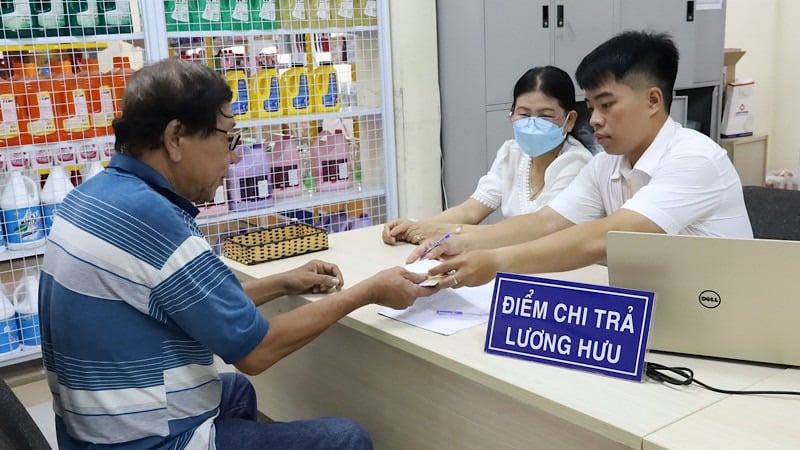





![[Photo] Binh Trieu 1 Bridge has been completed, raised by 1.1m, and will open to traffic at the end of November.](https://vphoto.vietnam.vn/thumb/1200x675/vietnam/resource/IMAGE/2025/10/2/a6549e2a3b5848a1ba76a1ded6141fae)
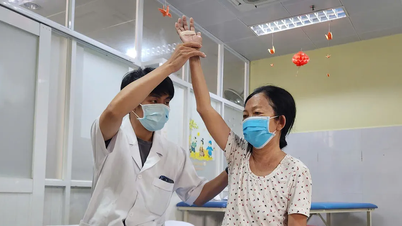

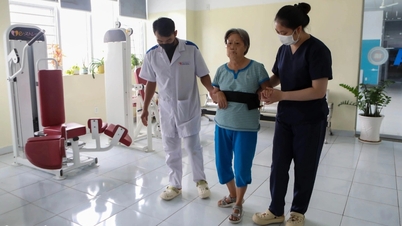










![[Video] Ministry of Health issues document to rectify medical examination and treatment work](https://vphoto.vietnam.vn/thumb/402x226/vietnam/resource/IMAGE/2025/10/2/54913f30a9934e18bcbb246c2c85f11d)


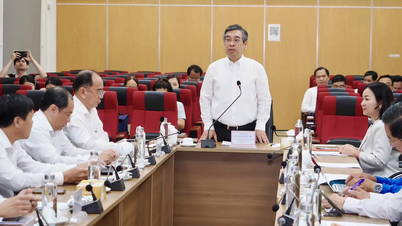
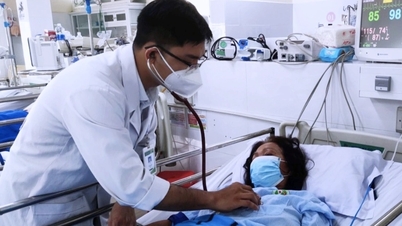













































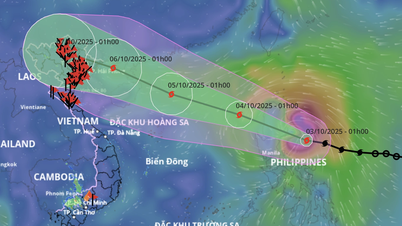






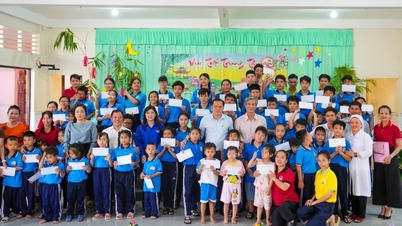

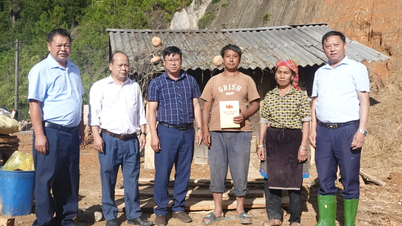


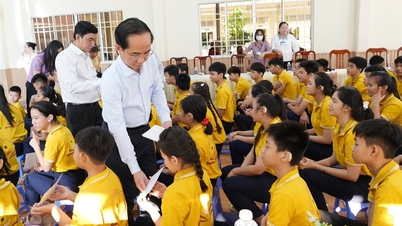
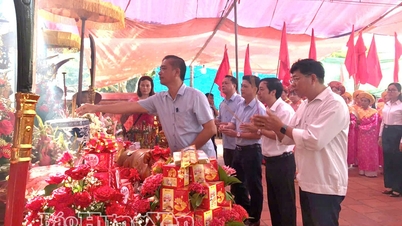

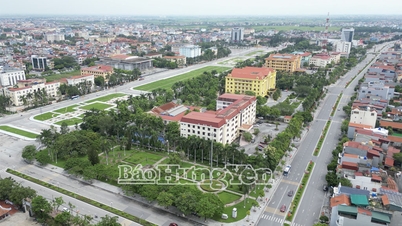











Comment (0)